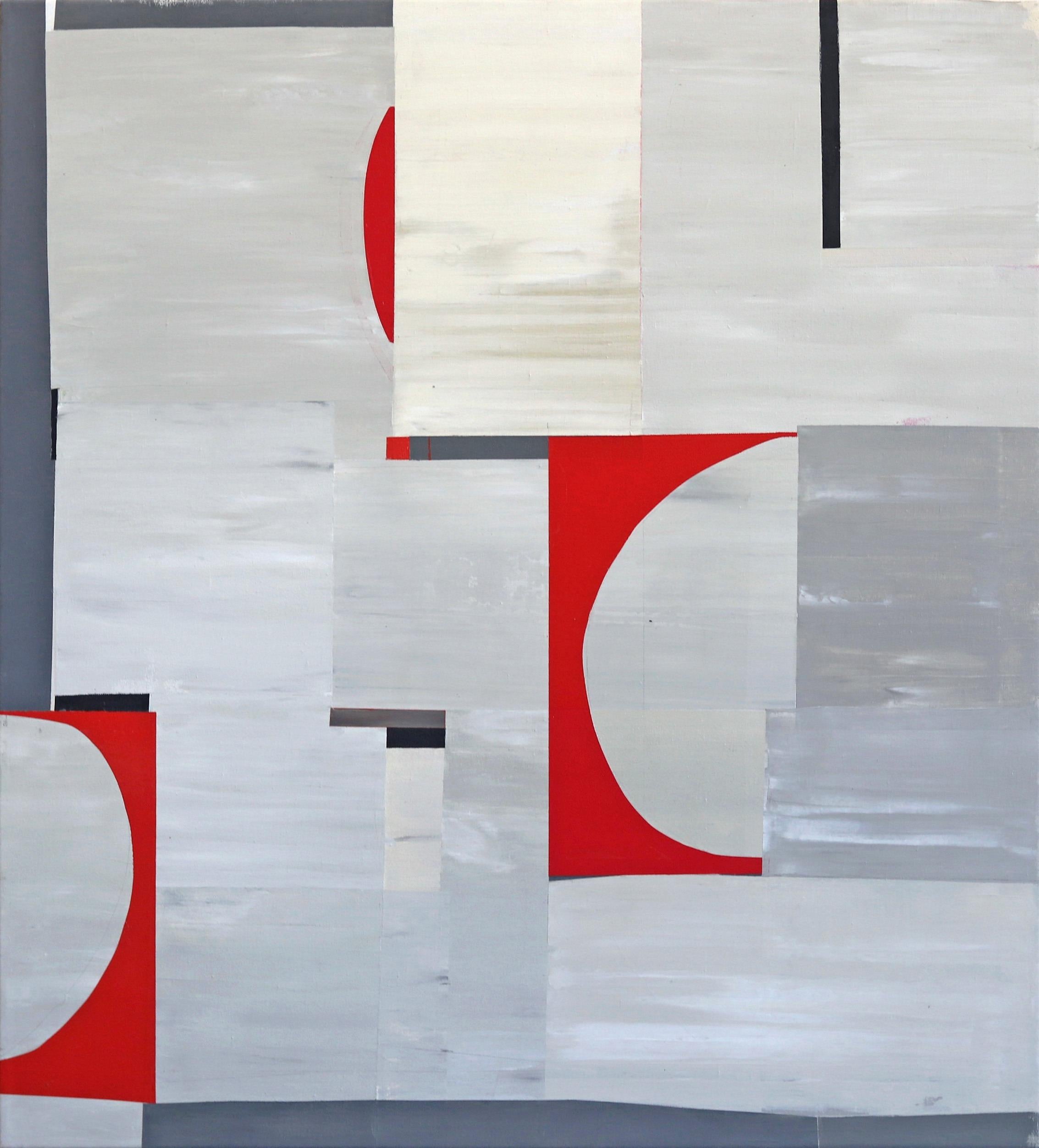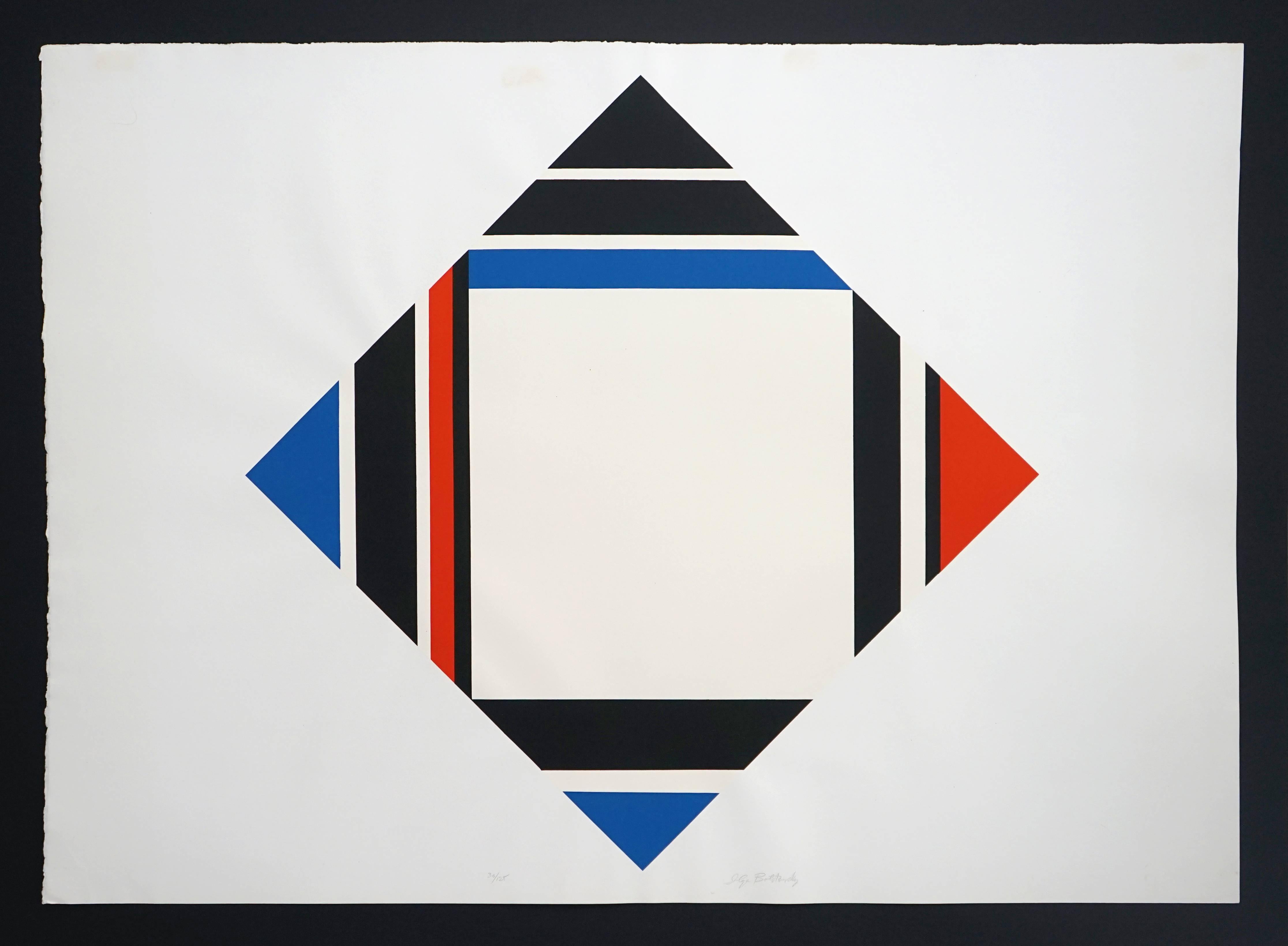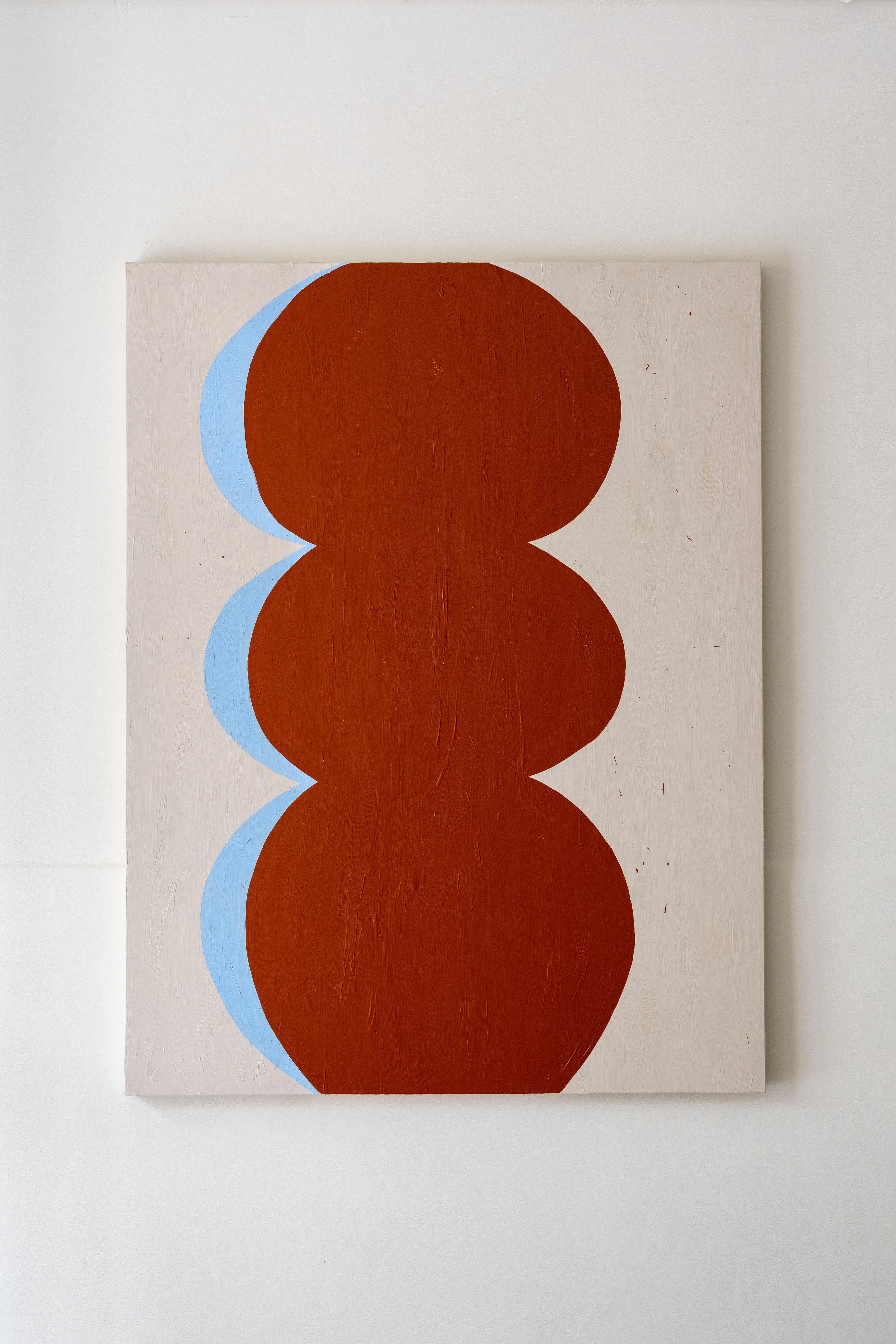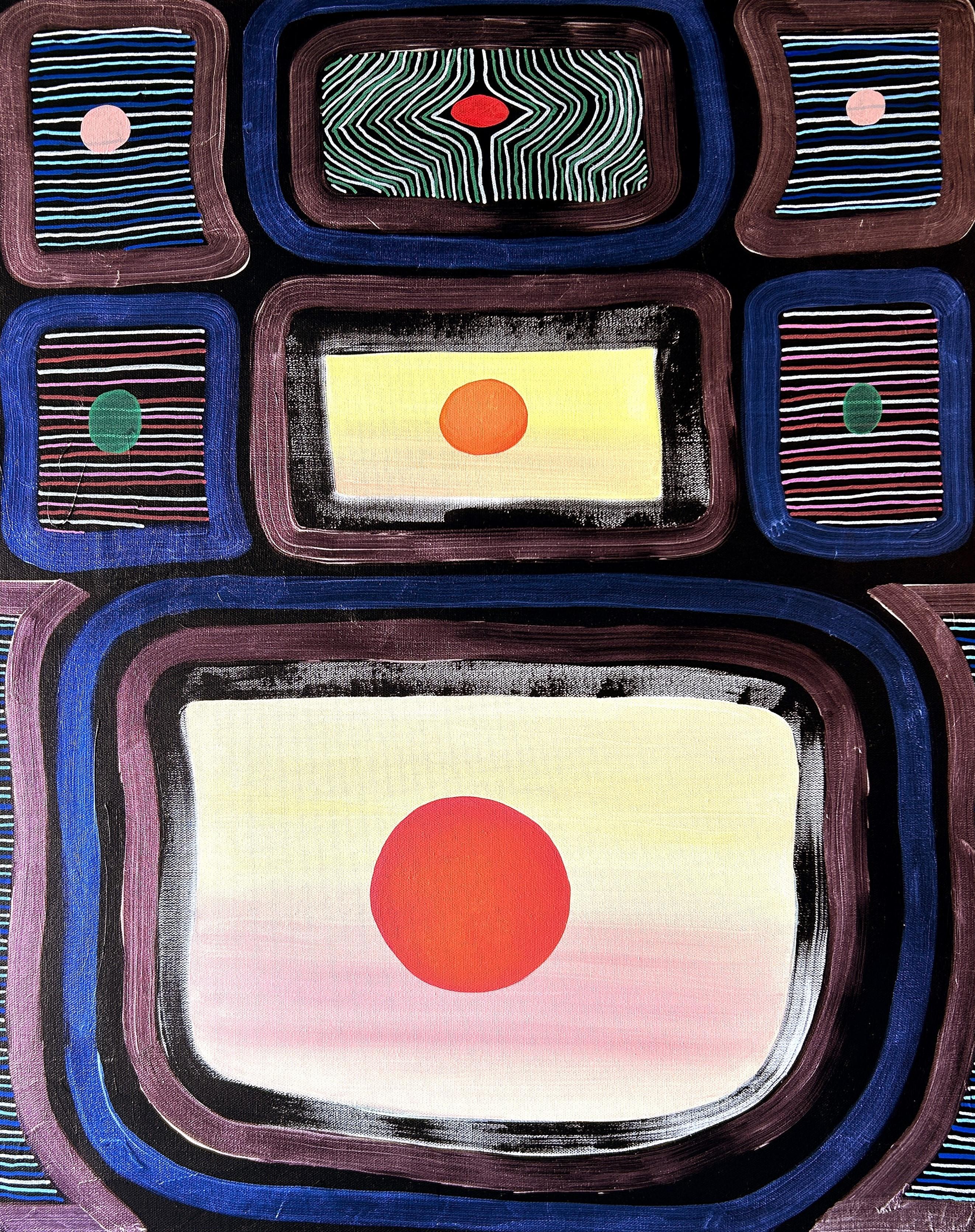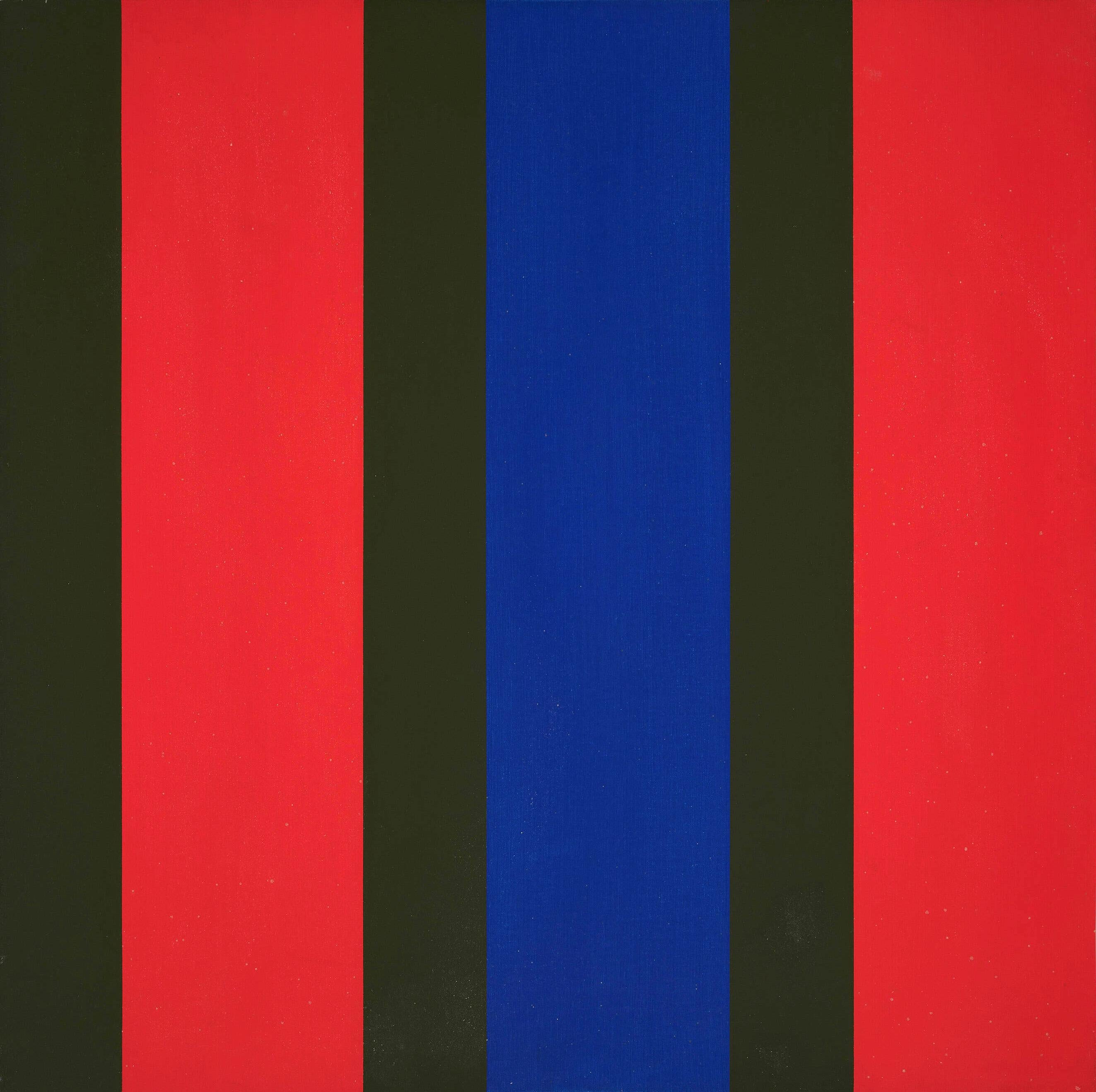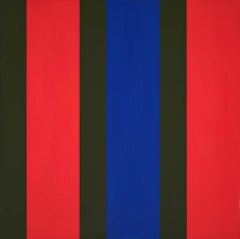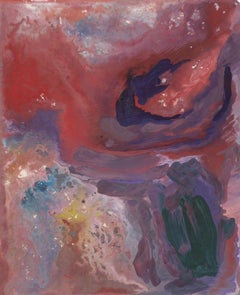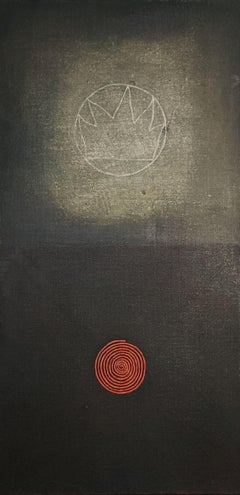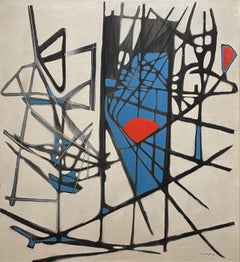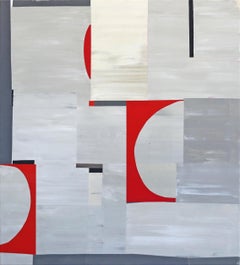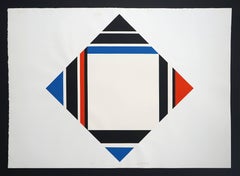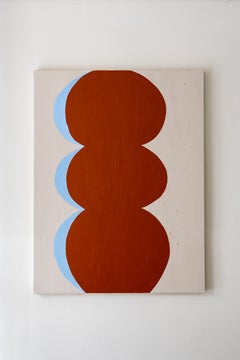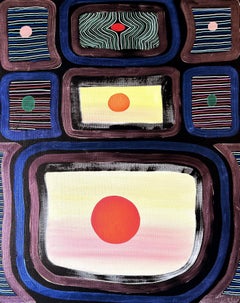Items Similar to "The Secrets in the Circle" Oli Sihvonen, Blue and Red Hard-Edge Geometric
Want more images or videos?
Request additional images or videos from the seller
1 of 9
Oli Sihvonen"The Secrets in the Circle" Oli Sihvonen, Blue and Red Hard-Edge Geometric1962
1962
$9,500
£7,169.39
€8,207.87
CA$13,398.15
A$14,709.50
CHF 7,673.98
MX$178,005.40
NOK 96,181.38
SEK 90,628.15
DKK 61,269.53
About the Item
Oli T. Sihvonen (1921 - 1991)
The Secrets in the Circle, 1962
Oil on canvas
25 x 34 in
Signed lower right; signed, titled dated, and inscribed "Box 563 Taos, N.M." on the reverse
Provenance:
Private Collection, Nyack, New York
Known for large, hard-edged abstractions, Oli T. Sihvonen, a Brooklyn native of Finnish ancestry, grew up in Connecticut. He attended the Norwich Art School before enrolling at the Art Students League in New York between 1938 and 1941. During World War II, Sihvonen served in the United States Army as a sergeant, specializing, as he later said, in “camouflage and deception.” His tour of duty took him to Europe where he encountered the work of Paul Cézanne.
In the summer of 1946, Sihvonen traveled to western North Carolina to study at Black Mountain College, which experienced a boost in enrollment following the war years. He was greatly influenced by the progressive color theories of Josef Albers, and, later, the thinking of Buckminster Fuller. After leaving Black Mountain in 1948, Sihvonen continued his studies under the G.I. Bill at Louis Ribak’s Taos Valley Art School in New Mexico from 1949 to 1950. A year spent painting murals in Mexico included work for the Instituto Politécnico Nacional in Mexico City, an early example of his large-scale proficiency. Returning to the East Coast, Sihvonen held a succession of teaching posts: initially in Washington, DC, and then in New York City, first at Hunter College in 1954 and the following academic year at Cooper Union.
Drawn to the southwestern landscape, Sihvonen moved to New Mexico, where he resided in Taos from 1956 through 1967. There, he painted sizeable geometric compositions with exuberant colors, which was atypical of Taos painters. One critic, Paul Goodman, assessed his style with the following description: “Sihvonen’s loving attention to the precise millimeter and the precise hue on the spectrum pays off in a floating and exciting calm and emotion; the picture is in motion, the colors leave their forms and come back changed. The canvas seems to generate its own light, not otherwise than in a bright noonday sun or in mysterious moonlight; there is a fullness of light.” Like Albers, Sihvonen often sought to create a chromatic environment where the brilliance of the colors produces a startling afterimage on the retina.
One of Sihvonen’s favorite shapes was the ellipse, as he considered it “active.” His well-known Ellipse series, represented by Double Matrix on Blue, dates to the 1960s. In geometry, an ellipse is a conic section, or the intersection of a two-dimensional plane and three-dimensional cone. By placing an ellipse within a rectangle, Sihvonen disrupts perception and accentuates the malleability of color.
While his canvases and diptychs received critical praise, Sihvonen once lamented that “dealers are not very interested in showing my work.” One exception was Betty Parsons, a proponent of modern art who accorded Sihvonen a one-man show at her eponymous New York gallery in 1962. Prestigious fellowships from the Yaddo Art Colony along with grants from the National Endowment for the Arts and the Wurlitzer, Pollock-Krasner, and Gottlieb foundations provided much-needed financial support. His work was included in significant exhibitions at the Museum of Modern Art and Whitney Museum of American Art in the late 1960s, and is today represented in these and other prestigious museums’ permanent collections.
About the Seller
5.0
Platinum Seller
Premium sellers with a 4.7+ rating and 24-hour response times
Established in 2022
1stDibs seller since 2022
122 sales on 1stDibs
Typical response time: <1 hour
- ShippingRetrieving quote...Shipping from: New York, NY
- Return Policy
Authenticity Guarantee
In the unlikely event there’s an issue with an item’s authenticity, contact us within 1 year for a full refund. DetailsMoney-Back Guarantee
If your item is not as described, is damaged in transit, or does not arrive, contact us within 7 days for a full refund. Details24-Hour Cancellation
You have a 24-hour grace period in which to reconsider your purchase, with no questions asked.Vetted Professional Sellers
Our world-class sellers must adhere to strict standards for service and quality, maintaining the integrity of our listings.Price-Match Guarantee
If you find that a seller listed the same item for a lower price elsewhere, we’ll match it.Trusted Global Delivery
Our best-in-class carrier network provides specialized shipping options worldwide, including custom delivery.More From This Seller
View All"DK. Green, Scarlet, Blue" Oli Sihvonen, Abstract Vertical Geometric Composition
Located in New York, NY
Oli Sihvonen
DK. Green, Scarlet, Blue, circa 1977
Signed and titled on the reverse
Acrylic on canvas
36 x 36 inches
Known for large, hard-edged abstractions, Oli T. Sihvonen, a Bro...
Category
1970s Abstract Geometric Abstract Paintings
Materials
Canvas, Acrylic
"Untitled" Friedel Dzubas, Shades of Red and Blue, Lyrical Expressionist Work
By Friedel Dzubas
Located in New York, NY
Friedel Dzubas
Untitled, 1985
Acrylic on paper
24 1/2 x 30 inches
A noted figure in the New York School, Friedel Dzubas was associated with the Color Field painting movement in the...
Category
1980s Color-Field Abstract Drawings and Watercolors
Materials
Paper, Acrylic
"Twice Told Tale (3)" David Shapiro, Rare Oil on Canvas Symbolic Composition
By David Shapiro
Located in New York, NY
David Shapiro
Twice Told Tale (3), 11/1983
Signed and dated on verso
Oil on canvas
44 x 22 inches
David Shapiro was born in 1944 in Brooklyn, New York. His artwork, as described by...
Category
1980s Abstract Geometric Abstract Paintings
Materials
Canvas, Oil
"Personal Equation" Jimmy Ernst, Abstract Surrealism, Black, Red, Blue, White
By Jimmy Ernst
Located in New York, NY
Jimmy Ernst
Personal Equation, 1950
Signed and dated lower right
Oil on canvas
41 x 39 1/2 inches
Provenance:
Laurel Gallery, New York
Grace Borgenicht Gallery, New York
Collection ...
Category
1940s Surrealist Abstract Paintings
Materials
Canvas, Oil
$28,000 Sale Price
20% Off
"Alizarin Orionids" Charles Hinman, Work on Paper, Red Geometric Abstraction
By Charles Hinman
Located in New York, NY
Charles Hinman
Alizarin Orionids, 2003
Signed and dated lower right
Watercolor on paper
12 x 12 inches
Throughout his long career, Charles Hinman has collapsed the divide between p...
Category
Early 2000s Abstract Abstract Paintings
Materials
Paper, Watercolor
"Composition" Balcomb Greene, Geometric Abstract, Early Modernist Composition
By Balcomb Greene
Located in New York, NY
Balcomb Greene
Composition, 1936
Signed Balcomb Greene on verso upper stretcher bar
Signed on backing board: Balcomb Greene
Oil on canvas
30 1/4 x 46 inches
Provenance:
The artist
A...
Category
1930s Abstract Abstract Paintings
Materials
Canvas, Oil
You May Also Like
Red Eclipse - Geometric Abstract Original Mixed Media Painting
By Heny Steinberg
Located in Los Angeles, CA
Mexican artist Heny Steinberg’s abstracted landscapes invite us to travel from the map to the localized event. The shapes within Steinberg’s work transcend two dimensional representa...
Category
21st Century and Contemporary Abstract Abstract Paintings
Materials
Canvas, Mixed Media, Acrylic
Red/Blue/Black Diamond
By Ilya Bolotowsky
Located in Austin, TX
Artist: Ilya Bolotowsky
Title: Red/Blue/Black Diamond
Year: 1970
Dimensions: 25.75 in x 35.875 in
Signed lower right
Edition: 30/125
Gondition: Good. 4 small square spots on top of w...
Category
1970s Abstract Geometric Abstract Prints
Materials
Screen
Artwork Geometry and Red Blue Mantra by Spanish Artist Mariona Espinet 2024
Located in Barcelona, Barcelona
At Escat Gallery we are committed to maintaining the highest standards of trust and professionalism for our collectors. Every artwork in our collection comes with a Certificate of Au...
Category
2010s Abstract Abstract Paintings
Materials
Cotton Canvas, Acrylic
$2,129 Sale Price
23% Off
“Untitled (CVS275)” Contemporary Blue, Purple, & Red Geometric Abstract Painting
Located in Houston, TX
Contemporary geometric colorful abstract painting by Texas-based artist Max Manning. The work features organic and geometric shapes in blue, red, and purple tones. Signed, titled, & ...
Category
2010s Contemporary Abstract Paintings
Materials
Canvas, Acrylic
Blue Toned with Red Accents Geometric Abstract Mixed Media
Located in Houston, TX
Blue, green, pink, abstract with red accents depicting what appears to be an interior scene with small red beans on a surface. Signed in pencil in front lower left corner. Framed and...
Category
Late 20th Century Abstract Abstract Paintings
Materials
Mixed Media
Stacking #2: geometric abstract Op Art painting in range of reds w/ blue lines
By Benjamin Weaver
Located in Bryn Mawr, PA
Contact me with zip code for best shipping rates and times.
Benjamin Weaver creates spatial tension through his use of contrasting colors arranged in a geometric framework. Imagery...
Category
2010s Abstract Abstract Paintings
Materials
Canvas, Acrylic
